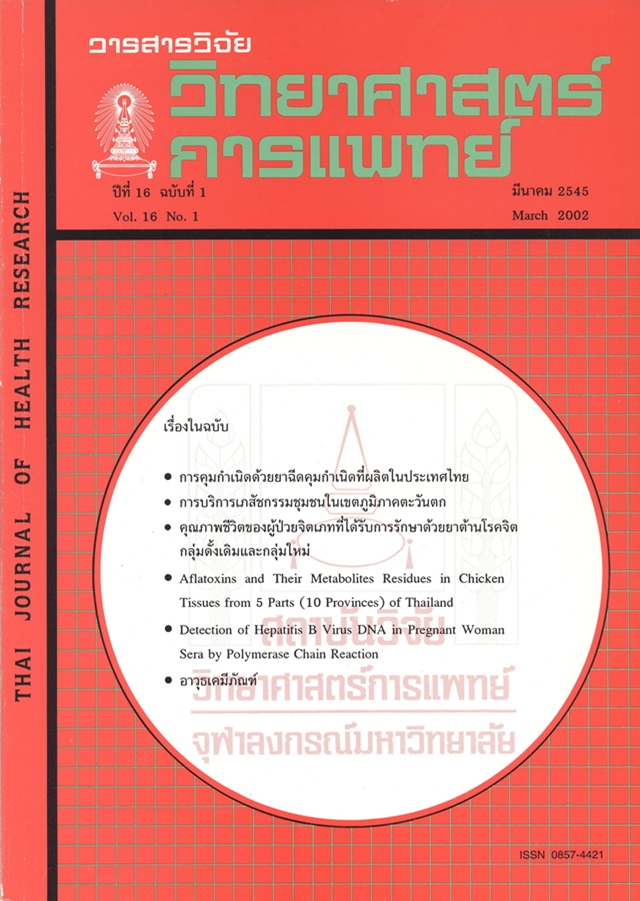Aflatoxins and Their Metabolites Residues in Chicken Tissues from 5 Parts (10 Provinces) of Thailand
Keywords:
aflatoxins, metabolites, residue, chicken tissueAbstract
Nine hundred samples of chicken livers, breast and leg muscles were collected from five parts (ten provinces) of Thailand during September 1996 to May 1997 by means of multistage random sampling for the detection of aflatoxins and their metabolites. Samples of 50 grams each were extracted and cleaned up by sep-pak florisil cartridge and quantitatively analysed by HPLC (High Performance Liquid Chromatography). 55.11% of the liver samples (248 out of 450) and 21.33% of the muscle samples (96 out of 450) were found to contain aflatoxin B1, B2, G1, M1 and R0. The higher residual levels of aflatoxin B1 were detected in the livers with mean value of 0.6092 ± 0.0994 ppb whereas the lower residual levels of aflatoxin B1 were detected in the muscles with mean value of 0.0451 ± 0.0116 ppb. The levels of aflatoxin B1 residues in both tissues were only 4.94% of the positive samples (17 out of 344) higher than tolerance level (5 ppb) in human food. Samples collected in winter season contained the highest aflatoxin residues with the highest frequency (51.67%) followed by samples of rainy season (48.67%) and summer season (14.33%), respectively. The samples collected from Wongwienyai region of Bangkok (the central part) contained the highest aflatoxins residues, followed by samples of Khonkaen province (the north-eastern part), Phitsanulok province (the northern part), Ayuthaya and Nakhonpathom (the central part), Songkhla and Suratthani (the southern part), Chiangmai (the northern part), Chonburi (the eastern part) and Nakhonratchasima (the north-eastern part), respectively. It can be estimated that Wongwienyai region of Bangkok, Khonkaen province and Phitsanulok province could pose a high risk to human health through ingestion of aflatoxins and their metabolites residues in chicken livers and muscles. Therefore, the policy to lower levels of aflatoxins in the chicken feeds could be set up to avoid the risk of cancer.







